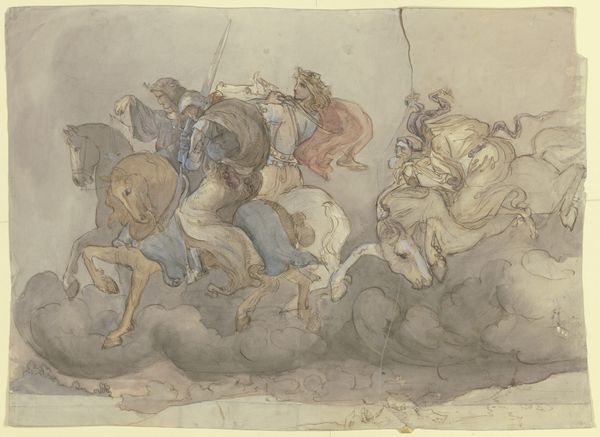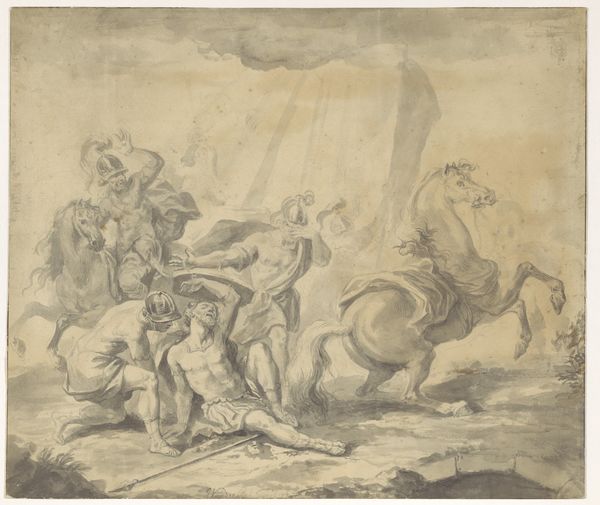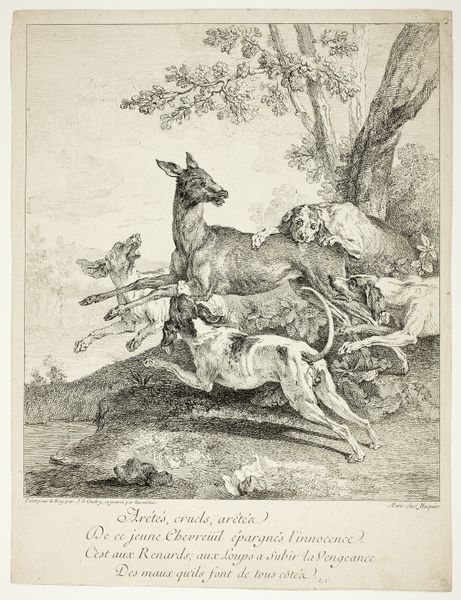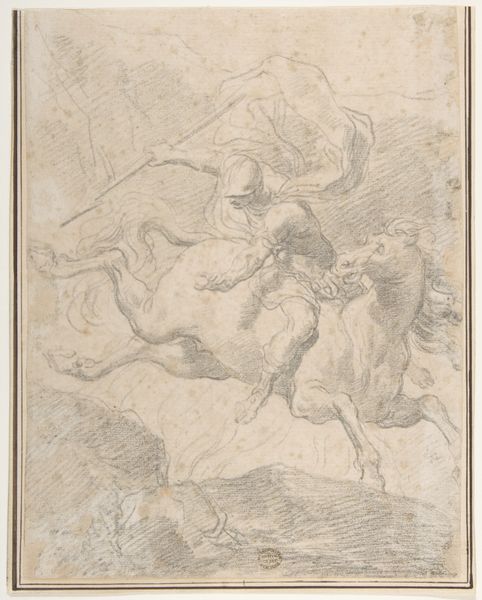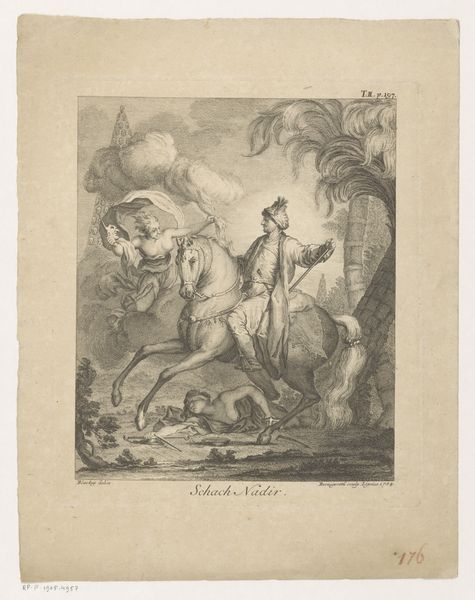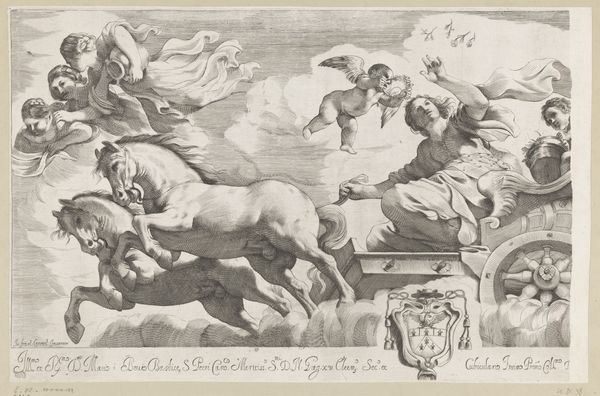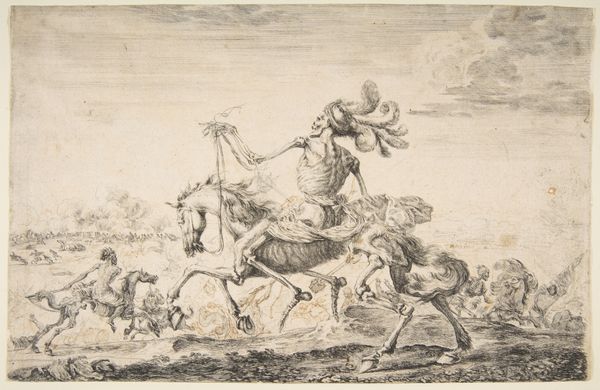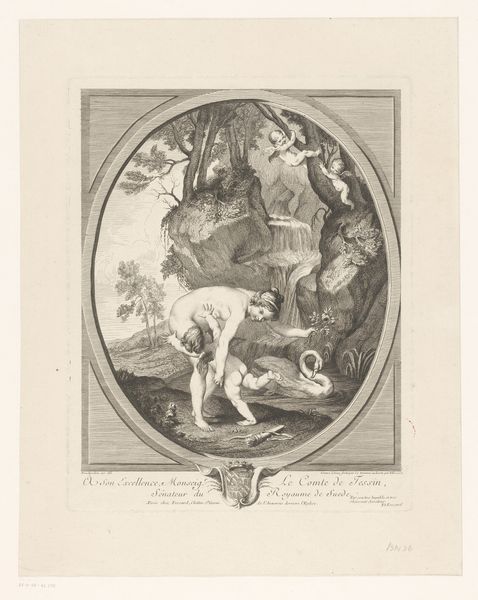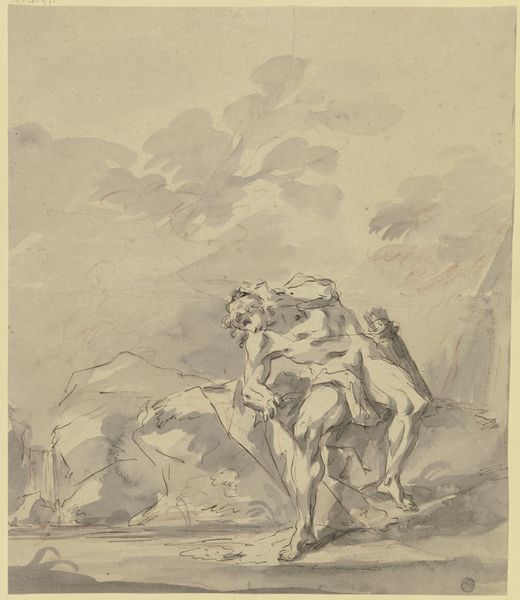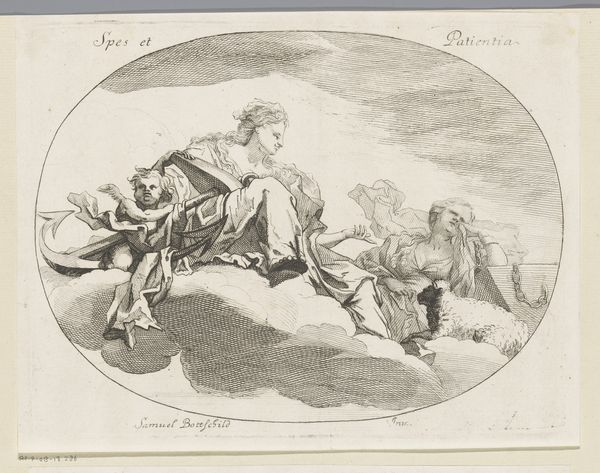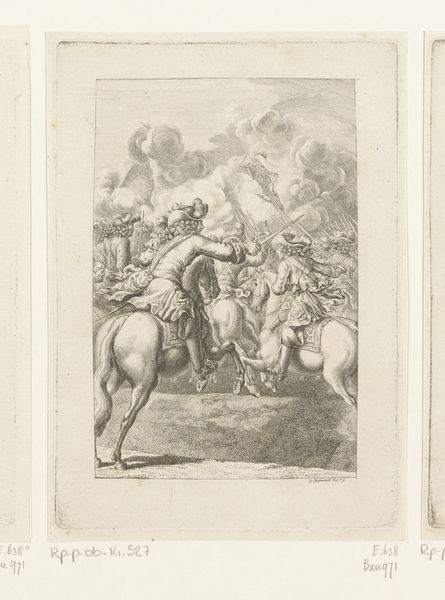
drawing, watercolor, ink, indian-ink, chalk
#
drawing
#
baroque
#
landscape
#
figuration
#
watercolor
#
ink
#
indian-ink
#
chalk
#
watercolor
Copyright: Public Domain
Curator: We’re standing in front of Jacob de Wit’s drawing, "Elias goes heavenwards," made around 1726. It's a wonderful example of Baroque draftsmanship, utilizing chalk, pen, and watercolors, and presently housed at the Städel Museum. Editor: Well, my first thought? Dramatic! The horses are practically bursting off the page, dragging that chariot with them. It feels light, though—a sketch of a dream, perhaps? Curator: It's a bozzetto, a sketch, made with pen and brown Indian ink, grey chalk, and watercolor, likely for a ceiling fresco. Notice the careful rendering of light and shadow with these materials. It's a study in how to achieve grandeur economically. De Wit had a lucrative workshop practice; how does the drawing illuminate his methods and marketing of his skills? Editor: That’s interesting. Seeing it as a product of his workshop clarifies its purpose; a sales tool and practical blueprint. Still, it evokes more than sheer functionality to me. The sketchy line-work communicates a frenetic energy – the palpable divine power. It seems to vibrate, all smoky light and explosive movement. It almost hides the brutal subjugation of the horse that enables his miracle, which troubles me... Curator: Fascinating observation. It prompts questions about the socioeconomic status and place of labor in society. Can such works reinforce hierarchical relationships? Editor: It does raise ethical considerations. But stepping back from that for a moment… look at the swirling clouds. How does that support a heavenly direction for the story he's painting? I find the whole piece wonderfully alive, full of artistic fervor, despite its age. Curator: It is the drama inherent in Baroque aesthetics and how it reflected specific patron requirements. It suggests also a social expectation of that time and place, and the labor to serve the economic expectations. Editor: I'll always be pulled in by the initial visceral response – a dance of line and shadow that sets the soul soaring. But you provide the necessary anchors to question assumptions and ground that impulse. Curator: The material conditions of art production inevitably intertwine with how we feel. They exist not in a vacuum. Editor: Indeed. A heavenly aspiration born of earthly toil— a tension that still resonates, even centuries later.
Comments
No comments
Be the first to comment and join the conversation on the ultimate creative platform.
